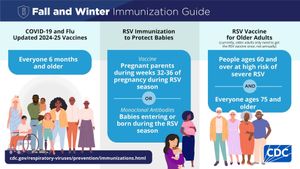On Wednesday night, Washington, D.C. shocked the nation as a tragic midair collision occurred between an Army Black Hawk helicopter and an American Airlines passenger jet, claiming the lives of 67 individuals. For investigators, the incident marks the deadliest aviation disaster since 2001, leaving communities grieving and officials scrambling for answers.
The helicopter, part of the U.S. Army's 12th Aviation Battalion, was on a routine training flight, familiarizing pilots with the airspace of the National Capital Region (NCR), when the catastrophic encounter unfolded near Reagan National Airport. According to Colonel Jonathan Koziol, chief of staff for the Army’s aviation directive, the Black Hawk was fulfilling its mission to prepare for possible evacuations of government officials during times of crisis.
Describing the flight as “routine,” Koziol emphasized it occurred along “Route 4,” which is often traveled by military aircraft ferrying VIPs. “This is a relatively easy corridor to fly because you're flying down the center of the river,” he explained, noting the ambient urban lights served as unofficial guideposts for the pilots. Both pilots aboard the Black Hawk were experienced aviators, with over 1,500 flight hours combined between them, the Army reiterated. Yet, the circumstances leading to the tragic collision remain under rigorous scrutiny.
According to preliminary findings from the National Transportation Safety Board (NTSB), the American Airlines flight increased its pitch just moments before impact, which might indicate the pilots attempted to avoid the oncoming Black Hawk helicopter. “At one point very close to the impact, there was a slight change in pitch,” stated NTSB member Todd J. McGowan during the Saturday evening press briefing. This finding raises questions about the visibility challenges faced by both aircraft.
Importantly, investigations suggest the Black Hawk may have been flying at altitudes exceeding the legally permitted 200 feet for helicopters within the corridor. While initial reports indicated the helicopter was hovering at approximately 200 feet, tracking data from air traffic control portrayed it at around 325 feet during the time of the crash. This discrepancy forms the crux of the NTSB's investigation, as many safety protocols could hinge on the accuracy of this altitude data.
The momentous challenge of managing air traffic around Washington D.C. is compounded by the city’s congested airspace, leading to questions over pilot coordination and operational protocols. “The low level helicopter routes have been in operation for decades – this area is one of the busiest aviation operation centers in the country, if not the world,” remarked Brad Bowman, former pilot with the 12th Aviation Battalion. With numerous aircraft traversing through this shared airspace, the potential for tragic near-misses has been exacerbated, prompting calls for safety reevaluations.
Reacting to the disaster, officials from various levels of government have raised alarms over aviation safety. President Donald Trump articulated concerns through his social media, attributing fault for the raised altitude of the Black Hawk. “It was far above the 200-foot limit,” he wrote, questioning the flight protocols exercised by military pilots. Similarly, Secretary of Defense Pete Hegseth echoed the uncertainty surrounding the helicopter's operational decisions during the flight.
The overall investigation promises to be thorough and exhaustive. NTSB officials continue to analyze data from black boxes recovered from both aircraft, hoping to elucidate any complicity from either pilot. “We do not know at this time if the night vision goggles were actively being worn,” said NTSB member J. Todd McGowan, underlining the importance of these devices during night operations. These goggles, initially providing enhanced visibility, can limit peripheral sight and distort depth perception, leaving the potential for human errors.
During this bleak investigation, rescue crews focused on recovery efforts at the accident site, where 42 bodies have been retrieved from the icy waters of the Potomac River. Among the deceased are three Army soldiers: Capt. Rebecca Lobach, Staff Sgt. Ryan Austin O’Hara, and Chief Warrant Officer 2 Andrew Lloyd Eaves, who were identified on Saturday.
Looking forward, the NTSB has been proactive since the collision, starting interviews with air traffic control personnel to gather as much insight as possible. The agency seeks to understand not only the deficiencies leading to the crash but also how operational anomalies like these can be prevented moving forward. “We are still working,” McGowan reassured the public, underlining their dedication to providing transparency and accountability through this process.
Critics of air traffic regulation have long lamented the congestion at Reagan National Airport. Senator Tim Kaine has previously warned about the increasing traffic and inadequate control staffing, emphasizing the need for renewed scrutiny to improve air safety. “This crash is devastating, and we must understand its cause to implement necessary changes,” he lamented.
Every moment counts as the NTSB promises to release preliminary findings within the month to guide not only this investigation but also future improvements for air traffic protocol, aiming for safety improvements and operational accountability within one of the most challenging airspaces nationwide.
Further investigations will unravel the mystery behind this tragedy as detailed analyses continue, ensuring every piece of evidence is accounted for to aid not only the families of the victims but also to uphold the safety of aviation practices. The nation watches closely, demanding clarity and justice from this heartbreaking accident.



